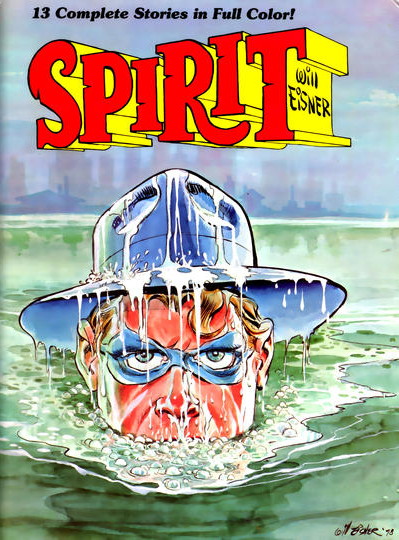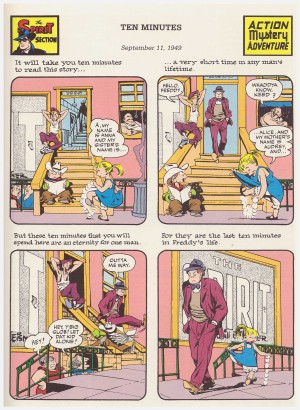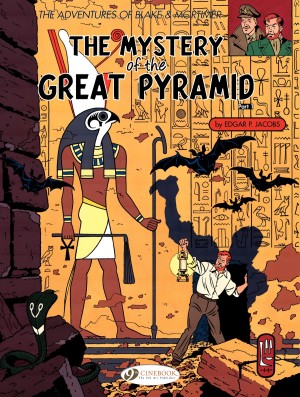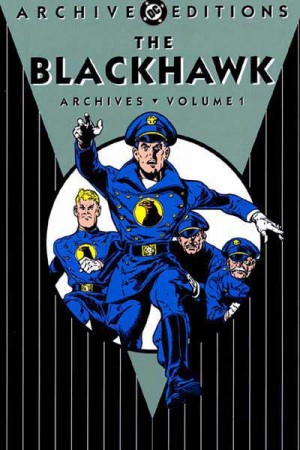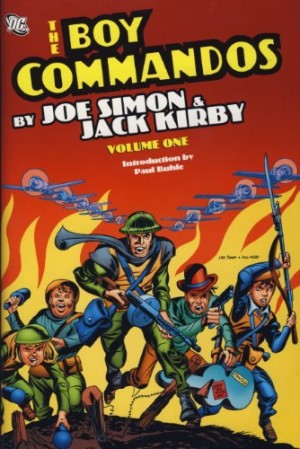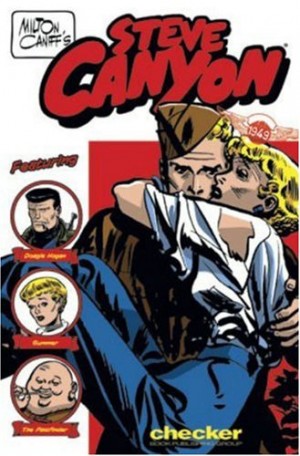Review by Frank Plowright
Now that every Spirit story from the 1940s has been presented in colour in 26 volumes of the Spirit Archives, is there any reason to buy this old hardback?
It’s a qualified ‘yes’, at least for those who haven’t already bought the Archives. The downside is that the stories were recoloured, and while not entirely horrible, it’s a wonder that anyone considered this an improvement. To mitigate the publishers, they merely bought into a European re-issue, so had no say. A bonus, though, is that each of the stories here is printed at the size the strips were originally seen as part of newspaper supplements in the 1940s, rather than reduced. Secondly, this is all prime material from between 1947 and 1950 with Will Eisner at the top of his game as far as the Spirit was concerned, sparking with ideas, drawing beautifully, and confident enough to experiment with his storytelling.
The one exception is the origin story of the Spirit, produced as a new strip in the 1960s for a short-lived reprint comic. It details how honest Denny Colt was left for dead, but the chemicals he was doused in after foiling the plans of the villainous Dr Cobra merely placed him in a form of suspended animation. He figured he’d be more use investigating crimes for Police Commissioner Dolan while officially dead, and so the Spirit’s career began.
We have two ‘Fairy Tales for Juvenile Delinquents’, facetious re-tellings of Cinderella and Hansel and Gretel, and three examples of the unknown, a topic to which Eisner frequently returned. In one a crooked businessman is murdered alone in a room by a bullet shot from a gun placed across the room on a table. Ellen Dolan meets one of her ancestors, and a ghost appears to tell her tale to Ebony White outside a building due for demolition.
If one discounts Ellen (and Cinderella), the glamorous women so associated with Spirit are in relatively short supply. P’Gell is eventually revealed, and two tales deal with Silk Satin, insurance investigator with young child, and tragic love life. We also dip in on the love life of latter day assistant Sammy, although that’s with food, in a story with the Spirit entirely absent until the final panel. That’s a gem of a panel, though.
Eisner’s Spirit stories were imbued with a broad streak of sentimentality, often mentioned, yet there’s some really downbeat material here, some of it as bleak as any noir example you’d care to name. Take ‘Ten Minutes’, for instance, a 1949 story written in collaboration with Jules Feiffer. We’re told on the first page that we’re witnessing the final ten minutes of Freddy’s life, which seems unlikely as we see him descend the steps of a tenement block. It’s a cleverly constructed, as Freddy isn’t a hardened criminal, just a kid having a bad day who has a rush of blood to the head. With the clock ticking Freddy appears to have escaped his fate… Such is the variety of approach, it’s difficult to select a best story, but the bookies’ favourite is ‘Ten Minutes’.
Two further hardback volumes reprinting random post-war Spirit tales were published before the series switched to themed selections focussing on Christmas, the Outer Space Spirit, and the Spirit’s most alluring female foe, P’Gell.
